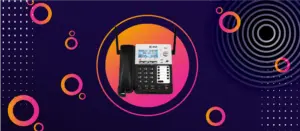Before you say, “I already know how to use my hold button“, let me ask you about the time YOU spend on hold. Can you think of some “on-hold time” you’ve experienced lately that was painfully awful? Yea, me too. Obviously, plenty of businesses don’t have the hold button thing figured out. One guy I found has been recording terrible-sounding hold messages and music on his iPhone. Neatorama Blog writes, “Clearly, I spend a lot of my life on hold, as this short list represents only half the total I recorded over the course of the last year.” You can visit the blog and hear samples of actual music on hold messages. Here are a few steps you can take today to best use that little red button that makes so many people angry.
- Who is calling? Rule number one in marketing and PR is, “know your audience”. By profiling the callers, you’ll get a picture of who you have on the line, what it would cost to lose them and the potential they hold for boosting your bottom line.
- How long are your hold times? Be honest. Managers say, “we don’t really keep people on hold”, but would your callers agree? Unless you’re operating a sophisticated call center, you really don’t know exactly how long your hold times are. Make the effort to nail down whether your hold times are 10 seconds or 50 or 60 seconds. While we all want shorter hold times, it pays to utilize the time callers are waiting on hold. Shorter hold times allow for short, meaty announcements, while longer hold times allow you to go into a bit more detail in your on hold message.
- What is the desired outcome of the call? Are callers looking to make a purchase? Check on delivery times? Make an appointment? What are their concerns? Work with a music on hold expert to develop targeted messages that provide the best possible outcomes.
- Get a free message on hold demo. By working with a qualified music on hold production team, you’ll be able to test your hunches about what callers want to hear. Share the demo with the people who answer phones at your company; get input; work closely with the production director who manages your script changes.
There’s a lot more to using your hold button than just pushing HOLD. Your hold button is a tool. Put it to good use!



